18 Tips & Tricks To Speed Up Windows 10 And Make It Faster
by islam ahmed
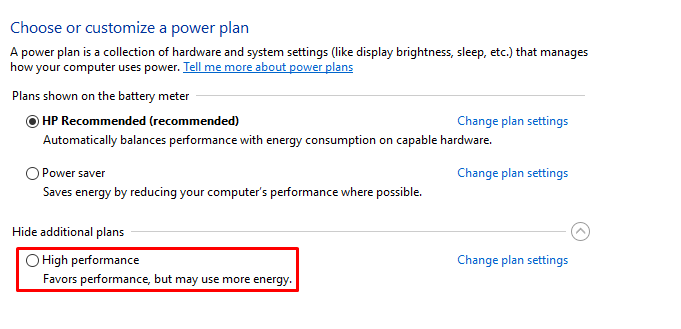
redmond has stopped increasing the version number of their operating system; we can only see themed Windows 10 Updates. In April 2017, Microsoft announced that Windows 10 would be receiving two major updates per year.
Despite all the rapid development, Windows machines slow down over time as they get bloated with programs and files. So, if you own a desktop or laptop running Windows 10, chances are high you might regularly use the web to find guides on how to make Windows 10 faster and improve its performance.
In the past, we have told you about the tips and tricks for improving performance on Android and iOS devices. So, I thought I should include whatever I know and create a post on how can we speed up Windows 10 and improve its performance to get the most out of the operating system.
It is possible that you might’ve come across some or many of these Windows 10 performance tricks across the web. But I think it would be great to refresh your memories.
How to speed up Windows 10 using 18 ways?
1. Prevent programs from loading at startup
It’s a common sight for most Windows users to have tons of apps and features loaded when their machines start. These are mostly the ones installed by the manufacturers, and others which automatically launch at startup.
Watching these programs load is one of the most visible instances where you feel slowness of your machine. On Windows 10 (and Windows 8/8.1), you can disable programs from loading at startup using the task manager.
And if you’re cherishing the old Windows 7 or Windows XP, the interface to disable startup programs can be accessed via the msconfig utility.
2. Use fewer apps at a time, reduce RAM usage to speed up computer
Running multiple apps at the same time increases your productivity. But doing the same puts an extra burden on the shoulders of your PC. Well, in most cases, the CPU isn’t affected much, but the RAM is the resource that gets exploited.
You can head over to the Task Manager app and monitor memory usage under the Performance tab > Memory. If the usage stats show that the programs are harassing the RAM chip, you can kill the culprits from the Processes tab to speed up your Windows 10 machine. But make sure you don’t end up killing an important process. You have to see that there is a difference between the ‘Available’ memory and the memory ‘In Use’.
Your system memory filling up to the brim causes things to slow down on your computer. Adding more RAM is one option, but it requires you shell out your hard-earned money. A less efficient measure to boost Windows 10 performance would be increasing the size of the Windows Page File.
How to change Windows Page File size? (Read our detailed article on Windows Page File here)
- Go to This PC > Properties.
- Click Advanced System Settings.
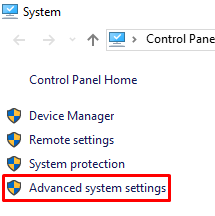
- Under Performance, click Settings. Go to Advanced tab.
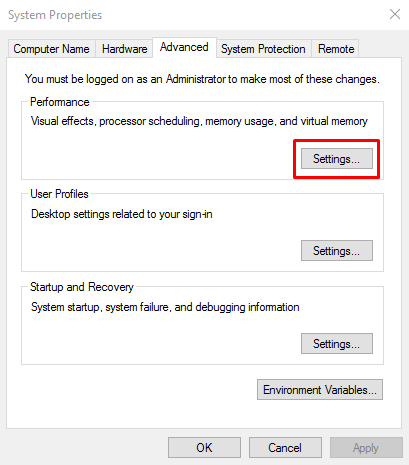
- Under virtual memory, click Change.
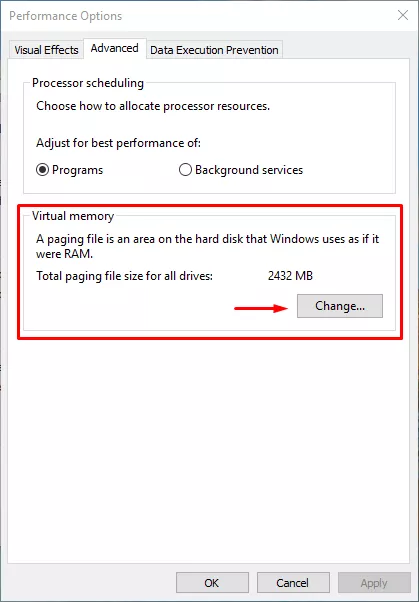
- Untick Automatically manage paging file size for all drives check box. Select a drive and enable the Custom Size option. Choose the Initial size and Maximum size of the page file. Click Ok to save the changes.
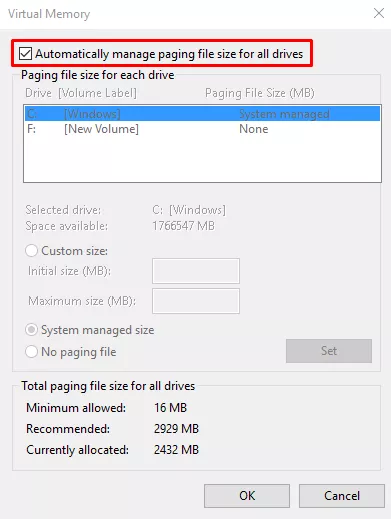
There is one thing, if you have excess RAM, like some 16GB, you really don’t need to increase page file size. However, disabling the page file isn’t an option you should consider. Your PC might run into problems.
3. See if your Windows isn’t corrupt
While the word “corrupt” is mostly used for a special category of humans, the data on operating systems like Windows can also get corrupt. Probably, some process or an app messed up things.
The corrupt data can make your Windows 10 PC work like a sloth (no offense to the animal, please). And in the worst scenarios, your system might crash.
One of the easiest ways to fix corrupted files on Windows 10 is to run the system file checker utility. You might have used the same while trying to repair corrupt pen drivesand hard drives that went rogue. Fixing corrupted files will surely speed up Windows 10 machine of yours.
How to run System File Checker in Windows 10?
You can start an elevated command prompt window and execute the following command.
sfc /scannow
The process might take some time depending on the size of your hard drive. Alternatively, you can run the tool by visiting This PC > Windows drive (right-click) > Properties > Tools. Click Check.
4. Scan your PC for malware to speed up Windows 10
Well, this might be the most naive thing you would read in the post intended towards speeding up Windows 10 PCs. Malware community has existed for decades, and their fear compelled Microsoft to include an anti-virus tool in their operating system; it’s called Windows Defender.
Your slow Windows 10 system might be due to some fishy app hiding inside the machine, disguised as some system update program or anything else.
You should regularly scan your PC for malware, either by using Windows Defender or some third-party antivirus software, to make your Windows faster.
5. Shutting down and restarting Windows isn’t an option, it’s a necessity
During college, I had some friends who probably didn’t know the ‘Shut Down’ and ‘Restart’ options existed on Windows. Their poor PCs had to stay up for weeks without getting any chance to restart even once.
Do keep in mind, your PC can survive a few days without rebooting or shutting down. But, that doesn’t mean one always should keep it running.
Restarting or shutting down your PC at regular intervals clears the system memory that gets consumed over time, and it also kills all the errant processes to speed up your Windows 10 PC.
6. Prefer to hibernate your PC, or maybe sleep
When you hibernate your PC, less time is required when you turn it back on. That’s because the current state of the system is saved on the hard drive and gets loaded when you power on the system.
Give your PC some sleep
Putting their computer on sleep mode is mostly a routine for Mac users because these devices can live for almost a month in that way. But now, Windows users also find it comfortable keep their PC in sleep mode for long hours.
In Sleep Mode, only the RAM on the device remains active. But sleep mode drains the battery, although in small amounts. So, you might not want to prefer it every time for your Windows PC, but sleep mode makes it quicker for you to start working on the system.
Don’t forget to check out our post on the difference between Shutdown, Sleep, Fast Startup, Hybrid Sleep, Hibernate.
7. Make Windows ugly as possible
Do away with animations and special effects
Our modern PCs are all about software that should look great, filled with animations and effects that soothe users’ eyes. But these visual improvements consume system resources. The machines which don’t possess efficient hardware could suffer the consequences sometimes.
There are also some people who don’t use their computers diligently; they install random apps and do things that cause problems. Sometimes, the normal operation of the machine suffers.
How to disable/enable animations in Windows 10?
You can tune Windows for best performance by disabling the animations. Go to This PC (right-click) > Properties > Advanced System Settings > Settings (Under Performance).
In the Performance Options window, select the radio button that says “Adjust for best performance”. Alternatively, you can select Custom and choose the options you want to disable.
Disable transparency
Having the taskbar, start menu, and action center transparent can be good to your eyes, but the feature consumes some of the resources on your PC. You can disable transparency by visiting Settings > Personalization > Colors. Turn off the toggle button that says ” Make Start, taskbar, and action center transparent.
8. Always keep Windows updated
There is an abundance of updates in the Windows ecosystem that are regularly pushed to the users, sometimes forcefully. But regularly updating your computer can improve Windows 10’s performance in addition to protecting the machine from unwanted threats and newly discovered vulnerabilities.
Starting from Windows 8, Microsoft provides universal drivers for a vast collection of third-party hardware. Updates for such devices are delivered through Windows Update. But in the case of unsupported third-party apps and hardware, you might have to update them manually.
If you’re running recent versions of Windows 10, updates install way faster than before. That’s because Microsoft has optimized Windows Update process in such a way that most of the installation happens in the background while the user is busy with their work.
9. Open apps lightning fast
This is one of the ways you can make Windows 10 faster during daily usage. You can create custom keyboard shortcuts to open apps by pressing a single key. In this post, we have detailed the process to create custom keyboard shortcuts in Windows.
10. Choose what your PC should prefer
In the same Performance Options window I mentioned above (point 7), switch to the Advanced tab. There, you can determine whether your PC should give preference to the programs you use or the services that run in the background. This adjustment could give a considerable performance boost according to your needs.
11. Turn off cloud sync to make Windows faster
Windows 10 offers integrated support for Microsoft’s cloud storage service OneDrive. You can copy all the files and folders to OneDrive which you want to upload to the cloud. Many users have a soft corner for Google Drive; there are chances they might not be using One Drive.
But even if you’re a die-hard fan of the OneDrive, turning on the sync and forgetting about it wouldn’t be a wise move. It would consume your resources and slow down Windows 10. In fact, it’s not only OneDrive, and you should do this for other services too.
To disable OneDrive sync and make your Windows faster, go to This PC > OneDrive (right-click) > Choose OneDrive folders to sync. On the next screen, untick the checkbox Sync all files and folders in OneDrive and click Ok.
12. Use fast startup to speed up your computer’s load time
One way to accelerate Windows 10 startup process is by turning on the hibernation feature that’s disabled by default. Fast Startup (enabled by default) is another feature which reduces the booting time of Windows 10. It’s a combination of shutdown and hibernation.
You can check whether Fast Startup is enabled for your computer by visiting Power Options > Choose what the power button does. Click “Change settings that are currently unavailable” to unlock the shutdown configuration. There, you’ll see the option to enable/disable fast startup. Check out our post on the difference between Fast Startup, Hybrid Sleep, Hibernate Shutdown and Sleep.
13. Use ReadyBoost to speed up Windows 10
ReadyBoost is a Windows feature that can supplement your RAM when your hard drive is slow. You might see visible differences in system performance if you’re running low-end hardware. Keep in mind, ReadyBoost doesn’t work in the case of SSDs as they’re usually faster than USB drives. You can read our detailed post on “How To Speed Up Windows Using ReadyBoost And USB Drive?” to get a better idea.
14. Turn off live tiles
Live Tiles debuted with Windows 8. The live tiles in the Start Menu or Start Screen provide updated information related to an app, either sourced from the web or locally. But they also consume resources and battery, not up to the level that it would slow things down. But turning the live tiles off would be beneficial if you never bothered to see what a live tile is offering.
How to turn off live tiles in Windows 10 to speed up your computer?
If you’re running Windows 10 Pro, you can use the Group Policy Editor. In the editor, open User Configuration > Administrative Templates > Start Menu and Taskbar > Notifications > Turn off tile notifications.
Otherwise, you’ll have to disable the live tiles manually for each app. Open Start > Right-click a live tile > More > Turn live tile off.
15. Use High-Performance Mode to improve PCs performance
The ‘High Performance’ mode in Power options helps you make the best out of your PC. The CPU can utilize its full potential, while the high-performance mode prevents various components like hard drives, WiFi cards, etc. from going into power saving states.

Connect a charger while doing resource-heavy tasks
Did you ever realize why power users prefer desktops? One of the reasons is the constant power supply which improves performance. In the case of laptops, you can keep the charger connected while you play games, or use a large software.
16. Use the build in troubleshooter
With the release of the Creators Update, Microsoft has started providing a dedicated section for various Windows troubleshooting utilities. You can visit Settings > Update & Recovery > Troubleshooter.
There, you’ll find options to fix errors related to Bluetooth, BSOD, audio, Windows Update, keyboard, and other hardware on the system. Fixing various problems can make your Windows 10 PC run faster and without errors.
17. Improve app performance in Windows 10
If you’re running the April Update, Windows 10 now includes a new Settings page that lets you change advanced graphics settings for individual apps, both UWP and classic. This could be handy if you’re facing performance problems with a particular app and you’re blaming your innocent PC.
Go to Settings > System > Display. Scroll down and click Graphics Settings. One the next screen, select the classic or UWP app you want to configure and click Add.
Now, click the app’s name and click Options. Here, you can choose between different graphics specifications like System default, Power Saving, and High Performance. The high-performance setting allows the app to take advantage of the discrete GPU on your system.
18. Reset your PC
Apparently, the last and the least option to end all of the Windows-related problems is to Reset your Windows 10 PC. You can do so by visiting the Recovery section in Settings or by the utility provided by your device manufacturer which you can access by pressing some key when the PC boots. Reinstalling Windows 10 would revert all the wrong-doings and changes you and various apps have made to the system.
So, these were some of the methods that can help you speed up your Windows 10 PC.

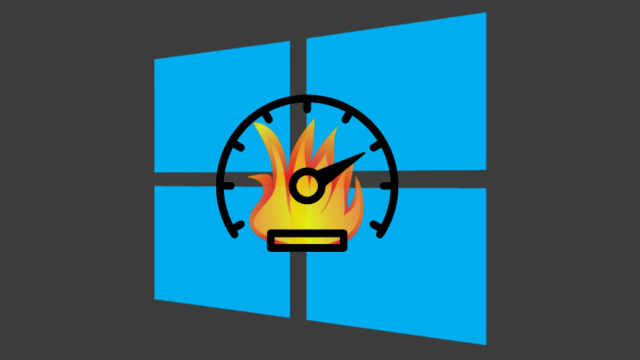
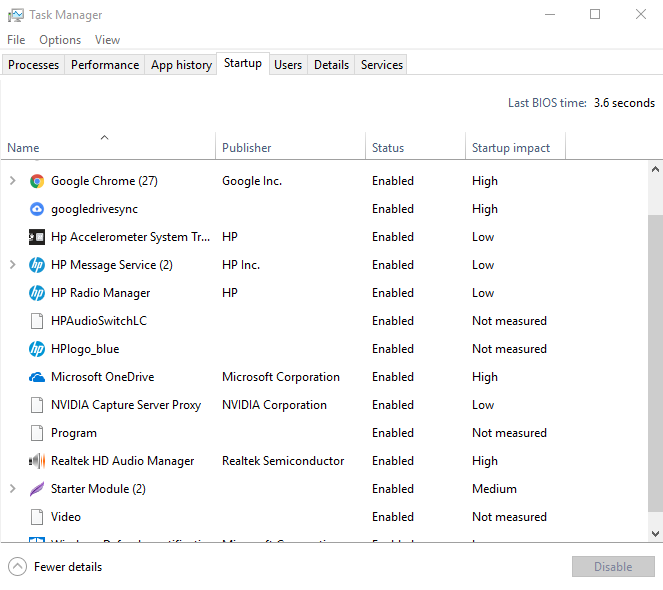
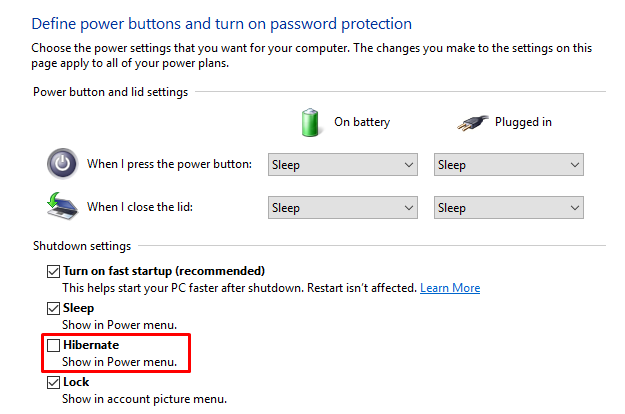
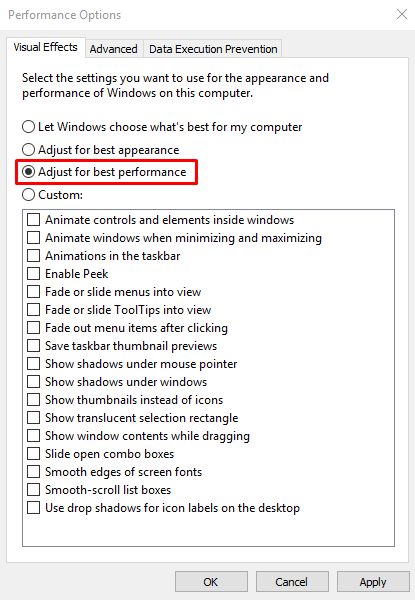
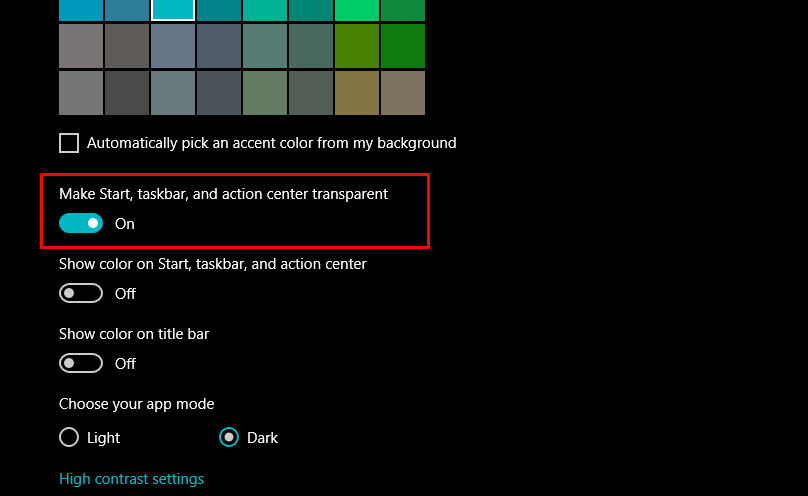
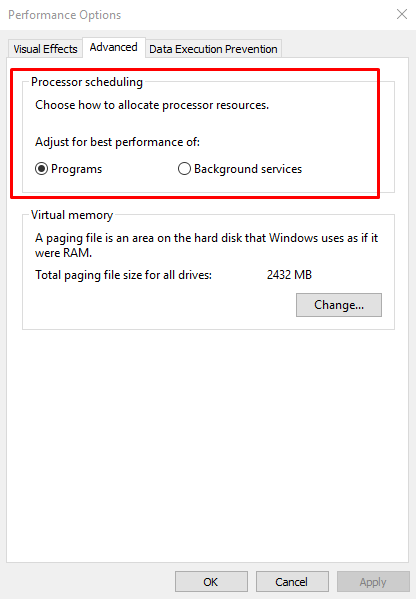

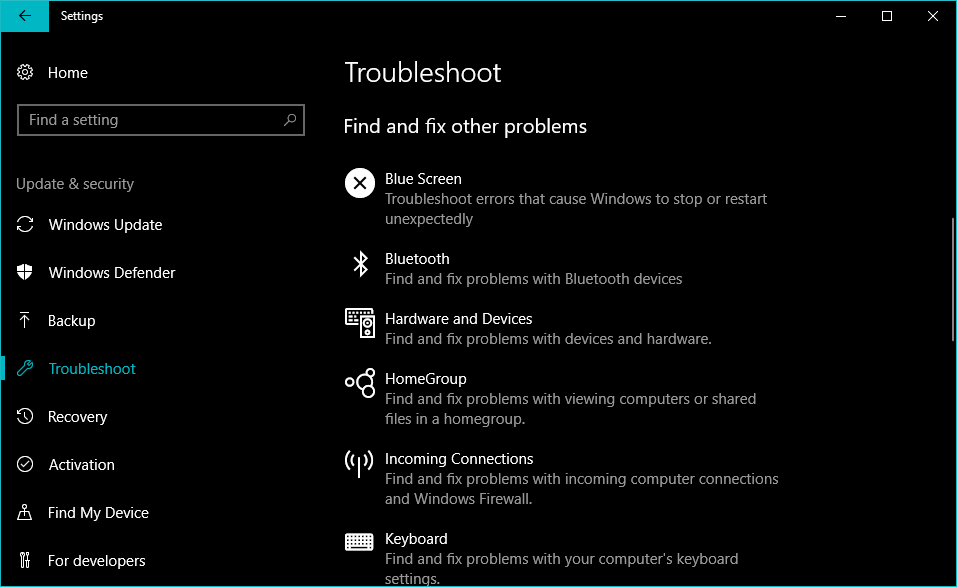
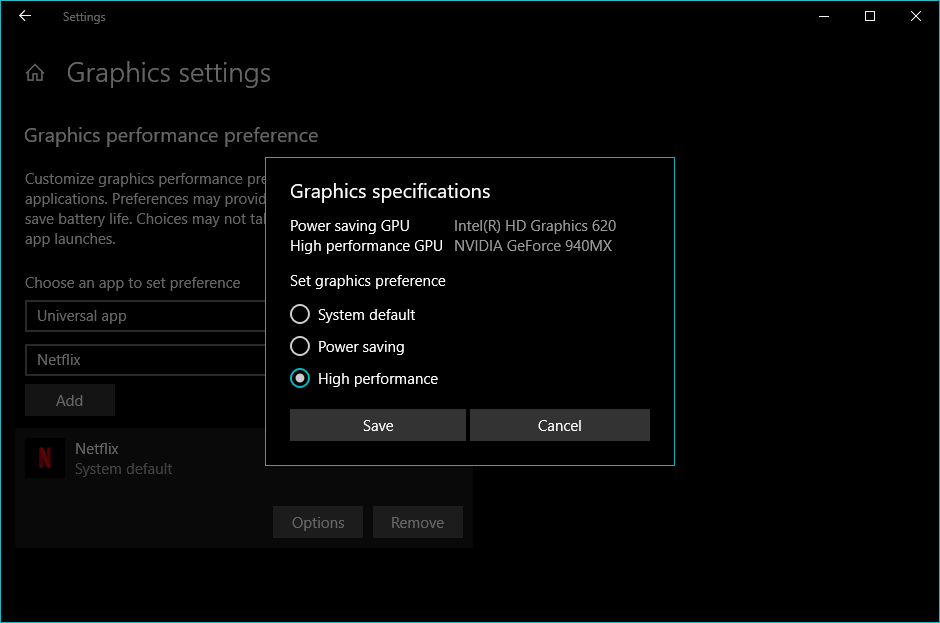
No comments:
Post a Comment